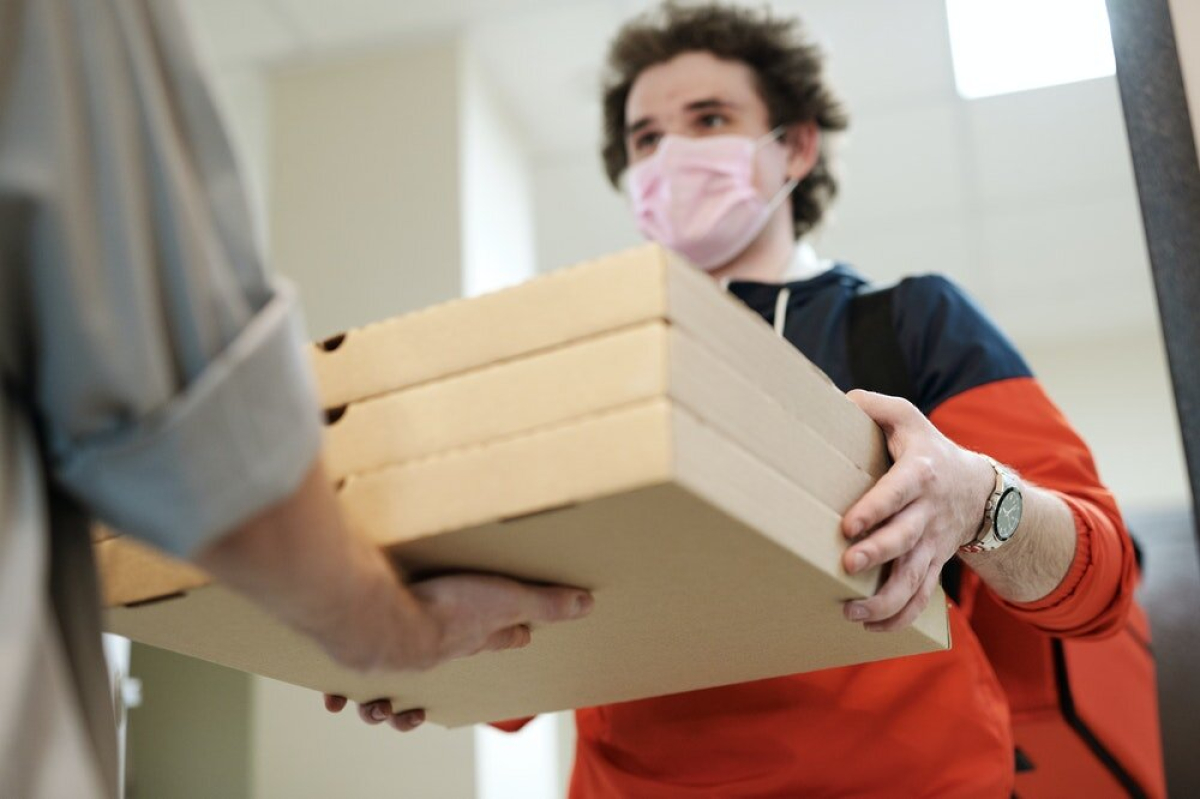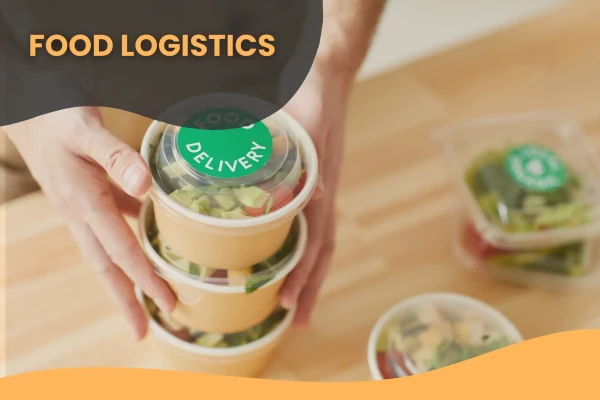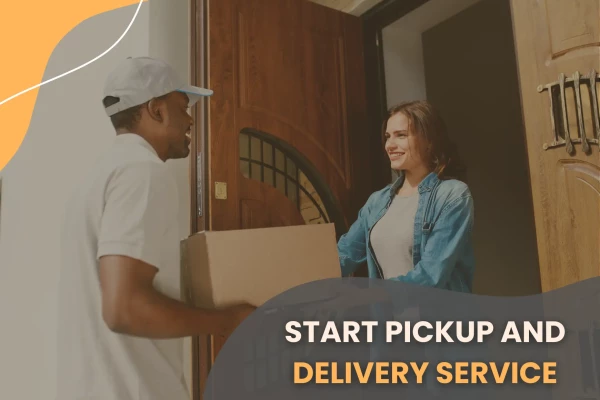Restaurant Delivery Software: a Must-Have for Food Establishments

by
Tanya Derevyanko
April 23, 2021
The culinary industry has faced extensive changes in recent years. Although COVID-19 has accelerated and bolstered these changes, technology was already drastically transforming how society produces and consumes food.
One of the developments that have been responsible for this is the ascent of technology-driven delivery methods. Restaurants and food establishments, in particular, have benefited from advancements in restaurant delivery software, grocery order apps, and other food tech solutions.
Finding the right restaurant delivery software is important for the modern restaurateur. Let’s look at why this is the case, how restaurant delivery software can help speed up your deliveries, and some additional benefits of using restaurant delivery software for your business.
The urgency of the food industry
“Instant gratification”. This is a term that has become synonymous with the modern-day customer, and the expectations they have for services, products, brand responses, and marketing strategies.
Consumers want to engage with current trends and to experience and receive what they want and need NOW. This means that brands and businesses have had to adapt their services accordingly. You have to get your customers what they want when they want it.
This urgency is exacerbated in the food industry. Brick-and-mortar food establishments and restaurants have to find smart and practical ways to get food out of their doors right to customers’ bellies. Online shopping, orders, and delivery have become the norm in the culinary space.
As Forbes notes,
True convenience, in a digital landscape, means the products and services are available to come to you.
And with the move to stay home, more and more people have migrated to digital shopping and eat-in deliveries instead of going out to eat or shop for groceries.
Outside of just convenience, speedy transportation of food is an integral part of the operations of food enterprises. What is the most popular complaint that 17% of customers make about food deliveries? It’s too cold or it’s not fresh! Unlike other products, food can rot or deteriorate in value, particularly perishables. Thus, it must reach its destination within specific periods so that it is fresh and of good quality for customers.
Convenience and fast deliveries play an important role in customer satisfaction and loyalty. And technology plays a vital role in achieving them all!
Technology and the growth of the food industry
Technology is a staple in our everyday life and it has led to notable changes in how we consume and receive food. Food delivery tech has gone from calling in, to ordering via the website, and now, to popular platforms and applications. Things like food delivery apps including UberEats and Freshly have become so normal in our lives that we don’t think twice about making an order.
Even grocery stores and supermarkets have realized the potential and necessity of fast deliveries and developed grocery and ingredient delivery apps like Amazon Go, Plated, and Blue-Apron. Other impressive and developing technologies include trucks that produce food en-route to the delivery destination, drone delivery options, and robots that fetch and make deliveries.
Food delivery statistics
-
Online food delivery revenue is set to reach US$151,526m in 2021. -Statista
-
China will generate the majority of the 2021 revenue, followed in second place by the United States. -Statista
-
A third of Americans use a food delivery platform at least once a week. -SevenRooms
-
Delivery order sizes increased in 2020. -Restaurant Business Online
-
Online food delivery revenue is projected to reach US$182,327m by 2024. -Statista
-
45.6 million people used mobile apps for food delivery in 2020. This number is anticipated to rise to 59.3 million in 2023. -eMarketer
-
Platform-to-Consumer Delivery is predicted to reach US$79,608m in 2021.-Statista
-
Introducing a food delivery service led to an increase in revenue for 60% of restaurants. -Restaurant Business Online
-
In a June 2020 study, Consumer Perceptions of Restaurant Delivery Fees, 41.5% of people said they were ordering more frequently since December 2019. 41.1% said their ordering habits had not changed and 17.4% said their ordering frequency decreased.
As you can see, food delivery is a big business.
How restaurant delivery software speeds up delivery
There are many ways in which restaurant delivery software speeds up your delivery service. Let's go over them.
Enables drivers
A brilliant food delivery software platform will bridge the gap between drivers, management, and customers. Drivers need access to details including the delivery address, order number and details, customer details, the route, other stops on the trip, the vehicle they are set to use, the expected delivery time, and more. Having all this information available in one place ensures that drivers can complete their deliveries efficiently.
With all the relevant knowledge, drivers can also remain confident, and place their focus on other tasks, like proper driving and good customer etiquette at the delivery point. This is not possible if the driver is stressing about all these other details around them. Thus, setting up a system that prepares drivers for trips and gives them the support they need leads to more efficient and faster deliveries.
Route planning & optimization
There are numerous features that route managers or delivery managers can utilize in a software system to speed up deliveries and support drivers as described above. Route optimization or route planning is one such important tool.

When planning drivers’ delivery routes, your software can map out shorter routes, paths that avoid traffic, and other obstacles like dangerous or unsafe routes. Essentially, your delivery software selects the safest and smartest way to get deliveries to where they need to be, ensuring faster trips.
This has an added benefit as you can give your customers more accurate ETAs for when they can expect their meal. There’s nothing worse than a disgruntled hungry and angry customer. Route planning helps you maximize your time and ensure speedy delivery!
Another awesome benefit route optimization has is that it can automatically generate routes with multiple stops. Of course, this has to work hand-in-hand with your order management.
Helps with order management
You cannot plan routes and stops without considering the orders you have to make, the distance between stops, and the size of the orders. With your restaurant delivery software, you can automate tasks like assigning orders to available drivers.
With instant notifications to drivers, you speed up communication for faster order handling and driver dispatching. Working hand-in-hand with the routing feature, this added control over orders can help you allocate drivers that are nearest to you.
Instant & real-time updates
Communication is important when it comes to restaurant delivery software selection. You need to be able to communicate with drivers instantly regarding a new order. You also need to be able to communicate with the customer on the progress of their delivery. Essentially, everybody needs to be on the same page about the receipt of the order, the making of the food, and the dispatch, ETA, and completed delivery.
Track-POD’s grocery and restaurant delivery software allows managers and the customer to monitor the delivery progress, and to track the driver in real-time once you dispatch the food. This is thanks to GPS tracking integrated into the driver delivery app.
Not only does this give a deadline to make sure food arrives at the estimated time, but it also gives managers the power to make sure that drivers do not make unnecessary stops along the way. Plus, if the driver encounters any delays like a road accident, the navigation can reroute them to a shorter route.
Customer management
As this article has already shown, the customer always matters when working with food. Customers want food deliveries quickly: 58% of them are unwilling to spend more than 40 minutes waiting for their order to arrive.
Restaurant delivery software helps you improve customer satisfaction and meet the need for speed through:
-
Faster and smarter routes
-
Fewer delays due to clear and instant communication
-
More accurate ETAs
-
Real-time tracking and updates
-
Quick electronic signing
-
Delivery confirmation emails
-
Direct communication between driver and customer via the restaurant delivery software app
The API included in the software also allows you to integrate other useful software solutions like your Customer Relationship Management (CRM) software. This streamlines your customer service tasks, making sure you can handle delivery queries more efficiently.
Analytics & metrics for improvement
In-software analytics and metrics are a fantastic and handy bonus feature. With metrics available, you can set goals for your deliveries and monitor whether your restaurant meets these goals. Metrics you should keep an eye on include:
-
The number of deliveries within a time period (ie: daily, weekly, bi-weekly, monthly, quarterly, etc)
-
Number of accurate orders or an order accuracy rate indicating the number of failed or faulty orders against correct orders
-
Deliveries that arrive on time
-
Travel time vs distance
-
Average delivery time or how long drivers spend making deliveries
-
Vehicle capacity vs loaded weight
-
Average delivery cost including labor, vehicle, fuel, and other costs
Analytics is also a great tool for improvement as you can analyze contrasting factors, and identify the primary causes of delayed deliveries.
API integration capabilities
Track-POD’s Application Programming Interface (API) allows you to integrate Track-POD programs with other systems. For example, you can integrate your ERP system for convenient invoicing, supply chain, production and manufacturing management, and correspondence with other departments.
Accessible data & documentation
A cloud-based restaurant delivery software system improves organization and access to data. You can find receipts and information on deliveries easily on your digital database. This makes management processes like recon and accounting easy. It also makes dealing with any arising issues simple. Whether you have to deal with a customer or client, you know exactly where to find the reference you need.
Therefore, the process will be easier and more enjoyable if you have the best accounting certifications.

Driver safety
Route planning and driver tracking work together to improve driver safety on the road. This is because the restaurant driver software gives you the power to choose safer driving routes. Navigation or GPS tracking helps you monitor whether drivers abide by the route and whether they follow the rules of the road.
Reduced costs
Restaurant delivery software can help you cut costs in various areas. With more accurate routing and reduced driving time, drivers log shorter hours, cutting the cost of labor to your business. Shorter routes also mean less distance covered leading to lower fuel spending. Less mileage combined with the use of safer routes results in less wear-and-tear on your vehicle. Thus, you can spend less money on vehicle maintenance and repairs.
Another cost-effective benefit of restaurant delivery software is paperless delivery. With electronic signatures, cloud documentation, in-app report drafting, and email receipts, your business will save money on paper and printing. Plus, lower fuel consumption, smart stops, and a paper-free process all minimize the cost of deliveries on the environment.
Greater control
There are numerous advantages that food businesses can gain from utilizing third-party platforms like UberEats. The primary one is that you leave all the grunt-work of running a delivery system up to somebody else. You also get the benefits of an already-established platform with its own audience.
However, you lose control over factors like the final price for customers as the service adds its own fees and tip. You also have no control over the quality of service provided by delivery drivers, nor the areas or locations the service delivers to.
In addition, you do not have the ability to communicate directly with your customers. Thus, utilizing your own restaurant delivery software for your in-house team gives you the power to give the best experience and service to your customers.
Conclusion
So many things can go wrong during delivery, but that’s not what the customer wants to hear. Your food business needs to account for all possibilities - from the weather to traffic, and bad roads to multiple stops. Anything to get the delivery there on time.
Restaurant delivery software can help you overcome all these obstacles through appropriate planning, instant communication, and real-time problem-solving. You can get all the problems out of the way so that there’s nothing standing between your hungry customer and the delicious food you’ve prepared. That way, you can ensure that they keep coming back for more.
About The Author
Tanya Derevyanko
I am the head of Customer Success at Track-POD. I love solving customers' pain points and seeing companies fully utilize Track-POD features.







